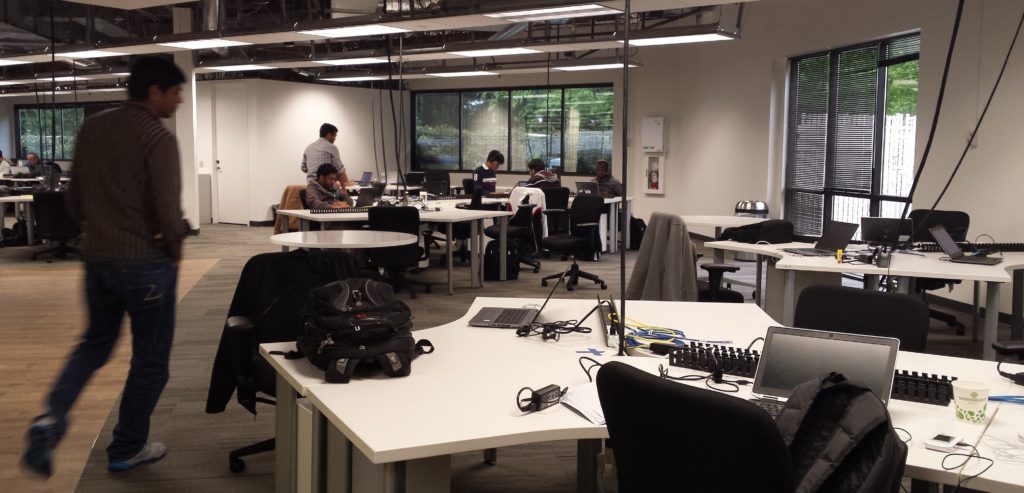What is the digital employee experience?

Organizations have obsessed with providing the best customer experience (CX) for years. Now, the focus is moving slightly and is homing in on how the employee experience can be improved. With the increase in digital services on offer, companies are now sensitive to how their technology infrastructure is impacting on the working life of the employee.
This, in a nutshell, is the basis for DEX. The experience touches on different levels: the physical, sensorial, emotional and rational. What makes an employee choose one communication platform over another? Why are people more drawn to sharing information over one exchange than the next? How are people finding out information they need to do their job?
Building a connected digital workplace
So, how is Digital Employee Experience defined?

With it being in its embryonic stage, it’s clear that there is no set definition for DEX. While many organizations have declared a keen interest in it, very few are actually implementing it – and even less have a determined account of what DEX is.
Not being able to settle on an agreed definition is a common feature of a new idea or strategy. Understanding of what DEX can only be achieved when the benefits are seen, and for this to happen, a full commitment to working within the digital workplace is required.
And of course, for this to happen, a workplace overhaul is needed as the temptation to fall back on old ways of working is wiped out. For most organizations, this is not an immediate process and can take several years to transform the internal culture: road testing new tools, training and phasing out more outmoded devices.
Despite this, several definitions are being shared. According to the Step Two Digital Employee Experience Survey, the respondents had several examples of what DEX is:
• “The experiences our staff have with our digital platforms
• “Holistic environment for work, delivered in a coherent, usable and productive way that removed friction between clients, colleagues, and partners to share knowledge, communicate and collaborate.”
• “It is the employee journey for everyday work.”
While each has a slight degree of difference, what is clear is that DEX has its roots in the relationship between the worker and the digital workplace.
In their survey, Step Two has coined their own definition, that DEX is “the sum total of the digital interactions within the work environment” and therefore a subset of broader employee experience (EX) consisting of the digital, physical and cultural components.
The challenges of DEX

With any new concept or methodology, expect to encounter some challenges when creating your DEX strategy in a busy organization.
Not regarded as important: with it in its infancy, DEX is relatively an unknown ratio. Being such a fledgling concept, organizations do not have a full understanding of its benefits and therefore do not regard it as a priority.
Uncertainty: Similarly, without a clear plan, a DEX strategy flounders. With no clear vision, the digital experience is overlooked in favor of more traditional priorities.
Different focus: Many organizations regard the customer as their main priority, and will, therefore, focus all resource getting CX right, rather than concentrate on their employees.
Digital restrictions: Low levels of tech in the workplace obviously pose a challenge to anyone keen to introduce DEX. With a heavy reliance on paper-based processes and methods of work, the digital workplace is incomplete.
How do you kickstart a culture of DEX in your organization?

An organization could have a rudimentary assortment of technologies in place, and employees could be using a variety of ways to work, some relying on email, others using paper-based processes and all distinctly at odds with one another.
Conversely, a business could boast cutting edge digital services aimed at easing employees’ ways of working, but the workers find their tools unwieldy and complicated. Both scenarios see poor levels of DEX.
And what both scenarios represent is a need for balance. Organizations have to analyze their workforce, monitor habits, find solutions and develop a culture where the use of digital tools is homogenized; people are knowledge sharing, communicating and collaborating within the same digital workplace.
So, if your workplace has developed a sophisticated digital workplace if you have the resources to concentrate on DEX, and if you have a clear idea of where you’re heading, you’re ready to implement DEX in your organization.
But how do you get started? The following recommendations should help you work out the first steps of your strategy.
Define what DEX is: While definitions bandy around, it’s important to see what DEX means to YOUR organization. Regardless of sector or industry, your own understanding of what DEX is central to how you implement and manage it.
Engage with stakeholders: Your approach to DEX will be galvanized by the collaboration with stakeholders in your organization. Not only will you receive much-needed support, but you’ll also have access to different insights and experience from all areas of the business.
Assess the needs of your workforce: No two DEX strategies are the same. Depending on how your organization works, their location and their disciplines, your DEX plan should adapt accordingly. In-depth interactions with your staff will be able to work out present requirements and future possibilities.
Train: Your entire workforce needs to be able to understand how to use the technology that is available to use. Those who don’t know how to use the tools, or don’t have a clear understanding of why they should be using it can easily be frustrated and disengaged.
The DEX process is a continual process of keeping the tech infrastructure up-to-date, making sure employees have a clear understanding of how to use the tools and those tools are a good fit for what they are required to do.
Building a connected digital workplace
How do you implement DEX?

To gain a better understanding of their employees, organizations are most likely to carry out feedback surveys to get a better understanding of how their staff work. Currently, methods used in other areas of the business are being incorporated in finding out more about employees, such as:
• Staff engagement survey
• Satisfaction survey
• User experience techniques
• User surveys
• Focus groups
• Hackathons
However, these only go surface-deep, and don’t go that far in exploring the employee experience. But as DEX evolves, methods will develop, and experts predict that more thorough techniques will take over. Research process and mapping user journeys will eventually become more routine, and a greater understanding will be achieved.
Who is responsible for DEX?

One of the most important parts of running an effective DEX strategy in an organization is deciding who is responsible for it. Appointing a team to steer digital employee experience means taking full ownership for it – and this can be difficult as different departments have different priorities.
A service that might be easy to manage for IT, SharePoint for example, may not be so easy for the end user. In this kind of scenario, workers stop using the systems provided and find easier workarounds.
The digital experience aims to close this gap and form a digital experience that works for everyone. One way of closing this gap is through an intranet which is the keystone of a modern digital workplace.
An intranet performs numerous tasks required for a digital workplace, together with a seamless user experience. It’s here that you can:
A cohesive experience: with Single Sign-On to allow the user to simplify application access, improve security and remove the pain of multiple logins.
A positive culture: helped by a social intranet which allows you to give employees more ways of communicating and collaborating.
Integrations: bringing all business platforms and applications to create a centralized digital workplace.
Training: the use of quizzes and modules can help you centralize your learning centers and keep all in-house training in one place – including results and achievements.
Ease on resources: the creation of forms and processes allows employees to save time and improve accuracy.
Collaboration: thanks to social features which allows comments, as well as a people directory and instant messenger support to connect and encourage working together.
Accessible content: with the help of rich editing tools, you can create engaging, relevant and useful content from one place.
DEX is an ongoing process, and one which develops and evolves. Implemented right and it can help you deliver a personalized digital experience, improved onboarding, better training and a more connected way of working. It encompasses a lot: different tools, demographics, roles and responsibilities – and every digital touch point made by every employee needs to be considered. With the structure of the office changing, so will the digital employee experience – and the way we work on managing it and improving it will need to adapt to the way our people work. But with it comes the sense that organizations have never before had access to such an efficient, dynamic and productive workplace.

